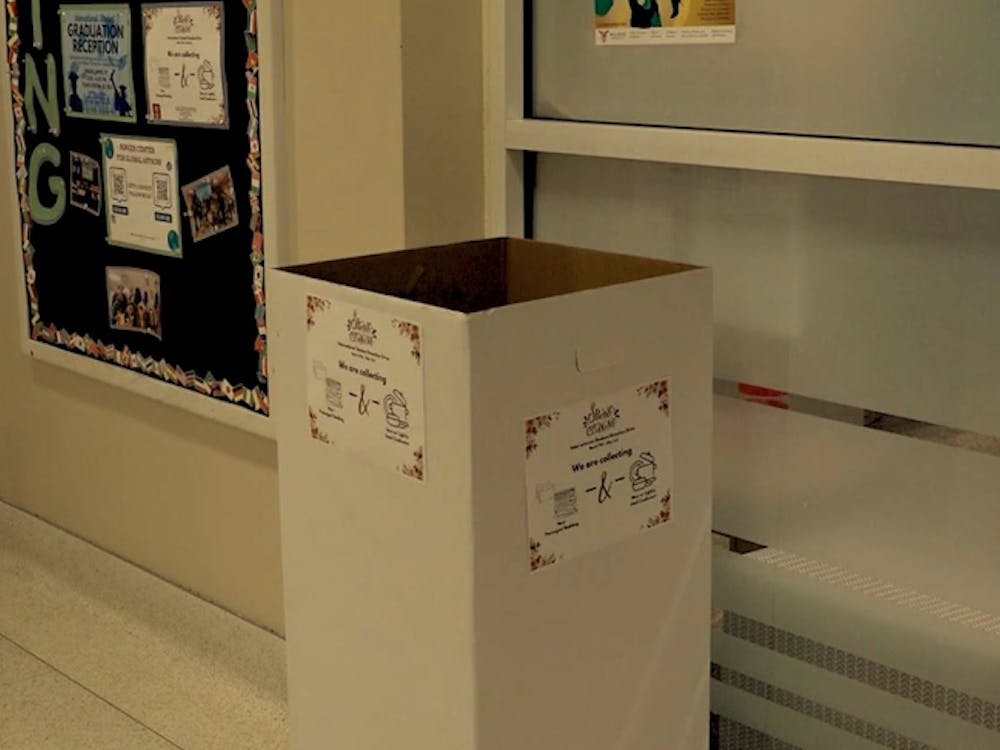After one year of a less-than-perfect economy and three months after Congressman Mike Pence (R-Ind.) stopped supporting local earmarks, Ball State University has no immediate plans to expand its campus borders.
Kevin Kenyon, associate vice president of Facilities Planning and Management, said Pence's self-imposed ban stalled construction on the third phase of McKinley Avenue improvements, which would have included Riverside Avenue, from Cooper Life Science Building to New York Street.
Randy Howard, vice president of Business Affairs and treasurer, said Ball State will continue to pursue various funding options, most likely federal funding, for the project.
In the past two years, the university has completed the construction of two new buildings -- Park Hall and the David Letterman Communication and Media Building -- and has another, Kinghorn Hall, on the way for Fall Semester 2010.
But Ball State officials said most of the university's future construction projects will focus on upgrading existing buildings.
Greg Graham, interim director of Facilities Planning and Management, said the second phase of the L.A. Pittenger Student Center renovation project, which includes mechanical system improvements and new offices on the second floor of the building, is expected to be completed in Spring Semester 2010.
Expansion of the Student Recreation and Wellness Center, which will add two new gymnasiums, is also scheduled for completion sometime in 2010, according to Ball State's Web site.
Kenyon said the university also has plans to reconfigure hallways and upgrade mechanical systems in the North Quadrangle Building, Teachers College Building and the Applied Technology Building.
"I don't think you're going to see an awful lot of difference [in five years]," Kenyon said. "There's a pretty good chance you'll see a new building and some type of housing in ten years."
Howard said if possible, Ball State administrators like to renovate buildings rather than build new ones because it's more cost effective and the university has attractive buildings already in existence.
When Ball State does decide to expand campus, Howard said it's a slow process.
"We've been fairly lucky," he said. "If we think an area might be needed for expansion, we've purchased properties at a slow pace. We really haven't had any battles trying to acquire properties. There have been a couple cases in recent times, but it was eventually worked out."
Leisa Julian, associate vice president of Business and Auxiliary Services, said she agreed.
"We take a passive approach in those instances when home owners contact us and indicate that they have an interest in selling their property," she said. "If it's in our target area, we [entertain their offer]."
But there are exceptions.
In 2003, the estate of Jacquolyne T. Werner, formerly of 601 N. Calvert Ave., lost a two-year court battle over property rights to Ball State. The university wanted to use the Werner's land to build a parking garage near the John R. Emens Auditorium and the Music Instruction Building. At the time, Michael Werner, the late Jacquolyne Werner's son, wanted the property to be used as housing for visiting Ball State faculty, an inn for visiting musicians or an international student area, according to a Ball State Daily News article. The case was settled for an undisclosed amount.
Julian said the future Kinghorn Hall now sits on Ball State's most recent land acquisition.
"Over numerous years the university acquired homes in that area knowing it was identified as a site for future development," she said.
Once the land was chosen as a site for Kinghorn Hall, Julian said Ball State got more active about buying the property. She said she would call the remaining property owners, meet with them and explain the university's interest in their land.
Howard said in addition to buying land to build on, the university must also obtain approval to build from the Ball State Board of Trustees and the Indiana State Legislature, which can take years.
Kenyon said the process took about 15 years until Ball State obtained the last property it needed to begin construction of Kinghorn Hall in 2008. Kinghorn Hall is supposed to replace LaFollette Complex, which he said the university will eventually tear down.
"The university is pleasantly surprised about how many students want to live in housing like Park Hall and Kinghorn Hall," Kenyon said. "The number of students living in student housing are more than expected, so we're ... wondering if we can do more."
Ball State has plans to renovate the Johnson Complex, he said.
Kenyon said Ball State's slow property acquisition plan should be fine for the future.
"I think we've got a good long-term plan that will probably meet our needs for the next 30 years, but I'm just guessing," he said. "My guess is that it will assure we have space."
Howard said although the university is not looking to expand, if it were, the neighboring houses and businesses could be a problem. Some campuses are far away from the city, so expansion is easier for them, he said.
"Our campus is surrounded by neighborhoods, businesses and community partners," Howard said. "... Right now I consider it a benefit. I'd rather be in an area that is surrounded by businesses and neighborhoods than by an area that is in the middle of nowhere."




